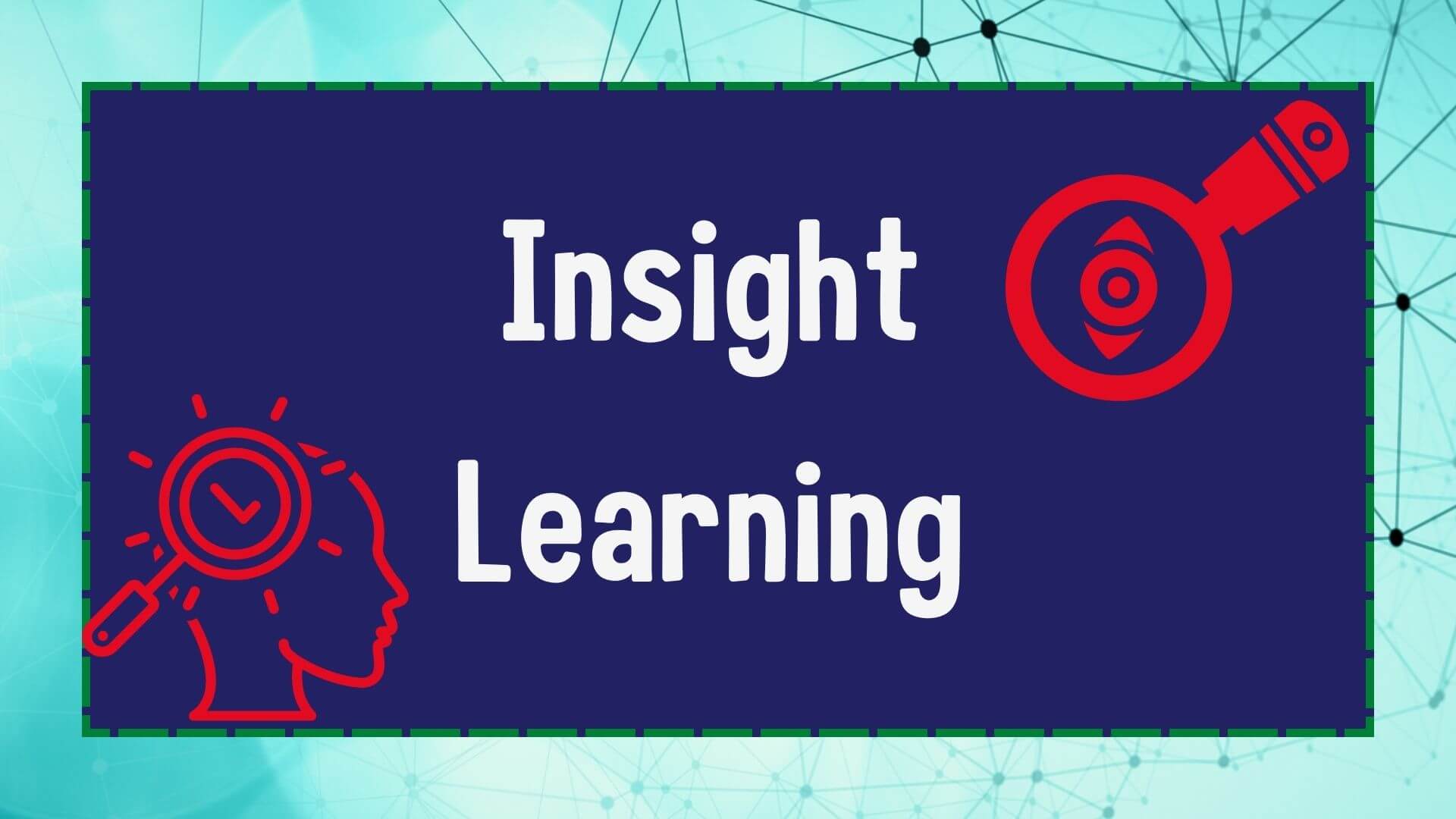Introduction

Pursuing knowledge and effective learning strategies has become paramount in today’s fast-paced world.
As a leading authority in education, we understand the significance of Insight Learning and its profound impact on the learning process.
In this comprehensive guide, we delve into the intricacies of Insight Learning, elucidating its benefits, implementation, and real-world applications.
Understanding Insight Learning
Insight Learning, often called “aha” or “eureka” moments, represents a cognitive phenomenon where a sudden and intuitive understanding of a problem or concept occurs.
This learning approach goes beyond rote memorization, fostering deep comprehension and problem-solving skills. Unlike traditional methods, Insight Learning encourages learners to actively engage with information, leading to more meaningful and enduring understanding.
The Key Benefits
- Enhanced Problem Solving: Insight Learning empowers individuals to tackle complex problems by fostering innovative thinking. It encourages them to analyze situations from different angles, leading to novel solutions.
- Long-lasting Retention: Unlike passive learning, Insight Learning promotes retention due to the profound understanding gained during the process. Concepts learned through insight are more likely to be remembered over time.
- Flexibility in Learning: This approach is versatile and can be applied across various disciplines. Whether in scientific research, artistic endeavors, or everyday situations, Insight Learning equips learners with adaptable skills.
Implementing The concept

To leverage the benefits of the Insight, follow these practical steps:
- Define Clear Objectives: Clearly outline the problem or concept you intend to grasp insight into. A well-defined objective sets the stage for focused exploration.
- Engage with the Material: Immerse yourself in the relevant information. Read, research, and gather different perspectives to develop a holistic understanding.
- Step Away and Reflect: Take breaks from active learning. Engage in unrelated activities to allow your subconscious mind to process the information. Insight often arises when the mind is at rest.
- Return with Fresh Perspective: After a break, revisit the problem or concept with renewed focus. The solutions or connections you missed before become apparent.
Real-world Applications
Insight Learning is not confined to classrooms; it is a vital skill applicable across domains:
Business Innovation
Entrepreneurs often employ Insight Learning to identify market gaps and develop innovative products or services.
Scientific Discovery
Researchers experience breakthroughs through insight, leading to advancements in medicine, technology, and various scientific fields.
Creative Arts
Artists, writers, and musicians rely on Insight Learning to create original, thought-provoking works that resonate with audiences.
In Conclusion
Insight Learning emerges as a beacon of intellectual growth in the quest for effective learning. This approach transcends conventional methods by fostering deep comprehension, problem-solving skills, and innovative thinking.
From classrooms to laboratories, boardrooms to art studios, the power of Insight Learning knows no bounds. Embrace the “aha” moments and unlock your true potential through the art of insight.
Frequently Asked Questions
Q1: What is Insight Learning, and how does it differ from traditional learning methods?
It is often called “aha” or “eureka” moments, is a cognitive phenomenon where a sudden and intuitive understanding of a problem or concept occurs. Unlike traditional methods that rely on rote memorization, Insight Learning encourages active engagement with information, leading to deeper comprehension and enhanced problem-solving skills.
Q2: What are the key benefits of adopting Insight Learning as an approach to learning?
It offers several key benefits. It empowers individuals to tackle complex problems through innovative thinking and analyzing situations from different perspectives. Additionally, concepts learned through insight are more likely to be retained over time, promoting long-lasting retention. This versatile approach can be applied across various disciplines, providing learners with adaptable skills.
Q3: How can I implement Insight Learning effectively in my learning process?
To effectively implement Insight Learning, follow these steps:
- Define Clear Objectives: Clearly outline the problem or concept you want to gain insight into.
- Engage with the Material: Immerse yourself in relevant information, research, and gather diverse perspectives.
- Step Away and Reflect: Take breaks to allow your subconscious mind to process information.
- Return with Fresh Perspective: After a break, revisit the problem or concept with renewed focus for new insights to emerge.
Q4: What are some real-world applications of Insight Learning beyond the classroom?
It has versatile applications across domains:
- Business Innovation: Entrepreneurs use Insight Learning to identify market gaps and develop innovative products or services.
- Scientific Discovery: Researchers experience breakthroughs through insight, leading to advancements in medicine, technology, and various scientific fields.
- Creative Arts: Artists, writers, and musicians rely on Insight Learning to create original and thought-provoking works.
Q5: How does Insight Learning contribute to intellectual growth and learning effectiveness?
It fosters intellectual growth by fostering deep comprehension, problem-solving skills, and innovative thinking. It transcends conventional methods by encouraging active engagement and allowing individuals to grasp concepts profoundly. This approach, from classrooms to various professional settings, harnesses the power of “aha” moments to unlock true potential and practical learning.
